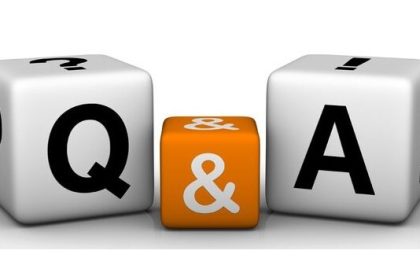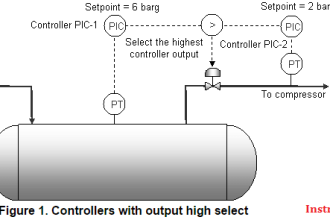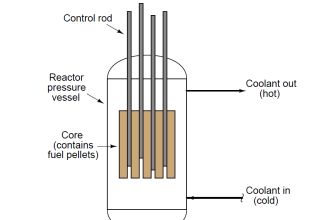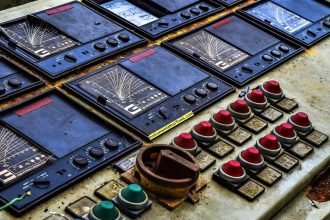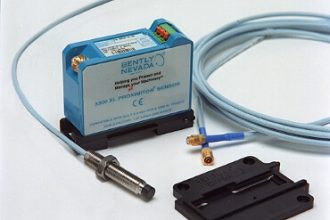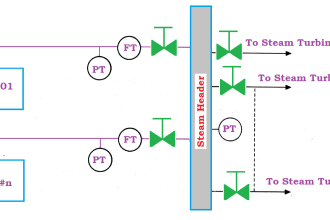Electrical Machines Objective Questions & Answers
Q.1 The two winding’s of a transformer are
(A) conductively linked. (B) inductively linked. (C) not linked at all. (D) electrically linked.
Q.2 A salient pole synchronous motor is running at no load. Its field current is switched off. The motor will
(A) come to stop.
(B) continue to run at synchronous speed.
(C) continue to run at a speed slightly more than the synchronous speed.
(D) continue to run at a speed slightly less than the synchronous speed.
Q.3 The d.c. series motor should always be started with load because
(A) at no load, it will rotate at dangerously high speed.
(B) it will fail to start.
(C) it will not develop high starting torque.
(D) all are true.
Q.4 The frequency of the rotor current in a 3 phase 50 Hz, 4 pole induction motor at full load speed is about
(A) 50 Hz. (B) 20 Hz.(C) 2 Hz. (D) Zero.
Q.5 In a stepper motor the angular displacement
(A) can be precisely controlled.
(B) it cannot be readily interfaced with micro computer based controller.
(C) the angular displacement cannot be precisely controlled.
(D) it cannot be used for positioning of work tables and tools in NC machines.
Q.6 The power factor of a squirrel cage induction motor is
(A) low at light load only.
(B) low at heavy load only.
(C) low at light and heavy load both.
(D) low at rated load only.
Q.7 The generation voltage is usually
(A) between 11 KV and 33 KV.
(B) between 132 KV and 400 KV.
(C) between 400 KV and 700 KV.
(D) None of the above.
Q.8 When a synchronous motor is running at synchronous speed, the damper winding produces
(A) damping torque.
(B) eddy current torque.
(C) torque aiding the developed torque.
(D) no torque.
Q.9 If a transformer primary is energised from a square wave voltage source, its output voltage will be
(A) A square wave. (B) A sine wave. (C) A triangular wave. (D) A pulse wave.
Q.10 In a d.c. series motor the electromagnetic torque developed is proportional to
(A) Ia . (B) Ia2. (C) 1/Ia (D)I1/Ia2
Q.11 The emf induced in the primary of a transformer
(A) is in phase with the flux.
(B) lags behind the flux by 90 degree.
(C) leads the flux by 90 degree.
(D) is in phase opposition to that of flux.
Q.12 The relative speed between the magnetic fields of stator and rotor under steady state operation is zero for a
(A) dc machine.
(B) 3 phase induction machine.
(C) synchronous machine.
(D) single phase induction machine.
Q.13 The current from the stator of an alternator is taken out to the external load circuit through
(A) slip rings. (B) commutator segments.(C) solid connections. (D) carbon brushes.
Q.14 A motor which can conveniently be operated at lagging as well as leading power factors is the
(A) squirrel cage induction motor. (B) wound rotor induction motor (C) synchronous motor. (D) DC shunt motor.
Q.15 A hysteresis motor
(A) is not a self-starting motor. (B) is a constant speed motor.(C) needs dc excitation. (D) can not be run in reverse speed.
Q.16 The most suitable servomotor for low power applications is
(A) a dc series motor.(B) a dc shunt motor. (C) an ac two-phase induction motor.(D) an ac series motor.
Q.17 The size of a conductor used in power cables depends on the
(A) operating voltage. (B) power factor. (C) current to be carried. (D) type of insulation used.
Q.18 Out of the following methods of heating the one which is independent of supply frequency is
(A) electric arc heating (B) induction heating (C) electric resistance heating (D) dielectric heating
Q.19 A ceiling fan uses
(A) split-phase motor.
(B) capacitor start and capacitor run motor.
(C) universal motor.
(D) capacitor start motor.
Q.20 A stepper motor is
(A) a dc motor. (B) a single-phase ac motor. (C) a multi-phase motor. (D) a two phase motor.
Q.21 The drive motor used in a mixer-grinder is a
(A) dc motor. (B) induction motor. (C) synchronous motor. (D) universal motor.
Q.22 In a capacitor start single-phase induction motor, the capacitor is connected
(A) in series with main winding.
(B) in series with auxiliary winding.
(C) in series with both the windings.
(D) in parallel with auxiliary winding.
Q.23 A synchro has
(A) a 3-phase winding on rotor and a single-phase winding on stator.
(B) a 3-phase winding on stator and a commutator winding on rotor.
(C) a 3-phase winding on stator and a single-phase winding on rotor.
(D) a single-phase winding on stator and a commutator winding on rotor.
Q24 As the voltage of transmission increases, the volume of conductor
(A) increases. (B) does not change. (C) decreases. (D) increases proportionately.
Q. 25 A commutator in a d.c. machine
(A) Reduces power loss in armature.
(B) Reduces power loss in field circuit.
(C) Converts the induced a.c armature voltage into direct voltage.
(D) Is not necessary.
ANSWERS
Electrical Machines
Q.1 The two windings of a transformer is
Ans : B
Q.2 A salient pole synchronous motor is running at no load. Its field current is switched off. The motor will
Ans: B
Q.3 The d.c. series motor should always be started with load because
Ans: A
Q.4 The frequency of the rotor current in a 3 phase 50 Hz, 4 pole induction motor at full load speed is about
Ans: C
Q.5 In a stepper motor the angular displacement
Ans: A
Q.6 The power factor of a squirrel cage induction motor is
Ans: A
Q.7 The generation voltage is usually
Ans: A
Q.8 When a synchronous motor is running at synchronous speed, the damper winding produces
Ans: D
Q.9 If a transformer primary is energised from a square wave voltage source, its output voltage will be
Ans: A
Q.10 In a d.c. series motor the electromagnetic torque developed is proportional to
Ans:B
Q.11 The emf induced in the primary of a transformer
Ans: C
Q.12 The relative speed between the magnetic fields of stator and rotor under steady state operation is zero for a
Ans: all options are correct
Q.13The current from the stator of an alternator is taken out to the external load circuit through
Ans: C
Q.14 A motor which can conveniently be operated at lagging as well as leading power factors is the
Ans: C
Q.15 A hysteresis motor
Ans: B
Q.16 The most suitable servomotor for low power applications is
Ans: B
Q.17 The size of a conductor used in power cables depends on the
Ans: C
Q.18 Out of the following methods of heating the one which is independent of supply frequency is
Ans: C
Q.19 A ceiling fan uses
Ans: D, Explanation : To give starting torque and to maintain speed.
Q.20 A stepper motor is
Ans: D
Q.21 The drive motor used in a mixer-grinder is a
Ans: D
Q.22 In a capacitor start single-phase induction motor, the capacitor is connected
Ans: B, Explanation : To make single phase motor self start. We split the phases at 90 degree. Hence, motor behaves like a two phase motor.
Q.23 A synchro has
Ans: C, Explanation : The basic synchro unit called a synchro transmitter. It’s construction similar to that of a Three phase alternator.
Q24 As the voltage of transmission increases, the volume of conductor
Ans: C, Explanation : Decreases due to skin effect.
Q. 25 A commutator in a d.c. machine
Ans: C , Explanation : As name suggests, it commutes ac into dc.
